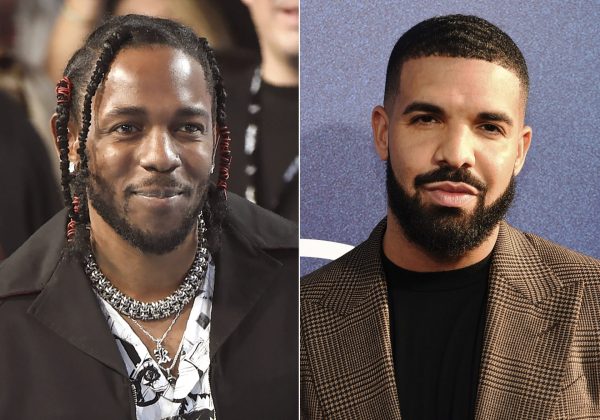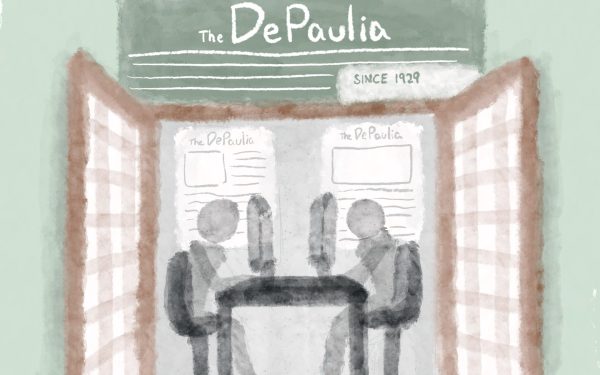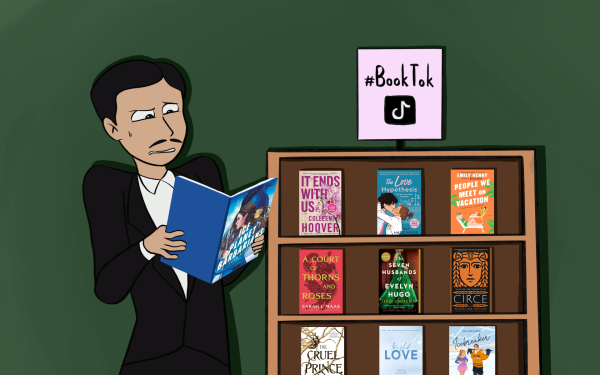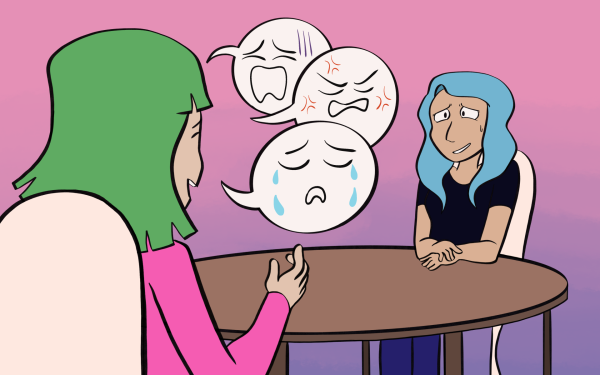OPINION: Uber sucks! But I’m not blaming the drivers
It’s flooding again in Chicago, so much that this time you can’t reach your stop at the “L” unless you swim. You swallow your pride (and four hours of minimum wage) to make it to class on time and pull out your Uber app. 64.56$ for a 15 min drive. Flipping between Lyft and Uber, watching the prices reach higher each time you refresh the page, a Citizen notification pops up and notifies you that somebody got robbed right behind the bus stop to help pressure your decision.
After ordering one anyway and sacrificing lunch money for the week, you see the wait time is 30 minutes. No matter what you do, you’re screwed.
What once was a reliable form of transportation, rideshare apps now fail their workers and riders. These services need to make rides safer and cost efficient again.
Olivia Hunter, a senior at DePaul, used to rely on rideshares during the pandemic to get to work safely. But now, after multiple traumatic experiences, Hunter refuses to use them.
“My work was still in person and it wasn’t safe to go on the L during the pandemic. There was so much crime and the trains never showed up anyways,” Hunter said. “I wouldn’t hate Uber as much if I could count on our public transit.”
Between 2018 to 2021, average Uber prices soared 92% according to data from Rakuten. This is one of the many reasons Hunter decided using Lyft or Uber wasn’t worth it.
“Late at night, I used to call Ubers to be safe but sometimes the price would be $50 to $60 just to get from River North to Belmont,” Hunter said. “I work in the service industry and it’s not like I make a lot of money, now I just take the risk because I’m not wasting all the money I just made.”
Stated in the Uber help line, “Dynamic pricing takes effect when a lot of people in the same area are requesting rides at the same time. This means that rides will be more expensive. Adjusting the price attracts more drivers to an area so everyone can get a ride.”
Like many Chicagoans during the pandemic, Hunter’s life didn’t stop and without the consistency of Chicago’s public transit, Hunter dealt with multiple issues when using rideshare apps including ghost drivers, upcharges, and just straight harassment from drivers.
“I would feel so uncomfortable with male drivers, they would ask for my instagram, compliment me really creepy and couldn’t take a hint that I didn’t want to talk,” Hunter said. “I hate that they knew where I lived and when I reached out to Uber multiple times, they never fixed the situation.”
Harassment with Ubers is not uncommon. Eli Schmitt, a junior at DePaul, experienced homophobic microagressions with a particular driver that left them uncomfortable.
“I was on my way back from a friend’s house late last winter, my driver was a young guy who was adamant about not wearing a mask, [relating] it to other people going to hell,” Schmitt said. “And then like all things do, the conversation turned to religion, and the phrase ‘and there’s the gays’ didn’t sound like a good start to me.”
Schmitt continued the conversation as the driver grilled them about bisexuality and being non-binary. According to Schmitt, the driver seemed to be going through a crisis, asking intrusive questions about his personal sexuality.
“Him being a straight man all his life slowly realizing he isn’t straight, he seemed like he didn’t know heads from tails,” Schmitt said. “By this time we are parked outside my house… I was opening the door to leave when he said, ‘No no no, you don’t have to go.’ I left my foot in the door so it couldn’t be locked.”
The driver proceeded to harass Schmitt and ask if they wanted to engage in sexual intcourse. After politely turning him down, Schmitt left the car and walked around the block before heading back into their house to not be followed.
Uber received 3,824 reports across the five most severe categories of sexual assault and misconduct.” according to the Uber newsroom.
Unfortunately, it is not only the riders who get harassed. One Uber driver spoke to The DePaulia about their struggles with unsafe riders, but asked to remain anonymous.
‘There are a lot of bad people in Chicago, you can never be too safe. I call my wife during my rides in case [something] happens and she needs to call [the] police,” the driver said. “People make fun of my English and call me terrible names and I just keep driving.”
The driver continues to work for Uber and Lyft because it’s difficult to find a good paying job in Chicago, while not having the best English skills.
“I have to do what I do to support my family, but I wish I didn’t have this job,” the driver said.
Samantha Close, a Communications and Media professor at DePaul tells The DePaulia, riders are now experiencing what drivers have had to endure since the beginning.
“The recent interest in surge charges and unreliability is consumers of digital platform services experiencing what drivers and other workers on these platforms have had to deal with for years. It’s very hard to know exactly how much you’re getting paid, much like it can be difficult to know how much a ride will cost,” Close said.
I don’t blame the drivers for how rideshare apps are unreliable. The companies themselves have been putting profit first instead of consistency and support for its workers and users.
Geoffrey R. O. Durso, an assistant marketing professor at DePaul, said the recent increase in prices is a normal practice for bigger companies to make profit.
“For years, Uber and Lyft invested a lot of resources in getting riders and infrastructure (like at airports) to win market share, including college students of course,” Durso said. “But those early years were subsidized by venture capital, without much in real-time profits to sustain the business. Now, they are in a position where their consumers rely on their services, and they are pursuing their longer-term profit goals.”
With data analytics, companies like Uber and Lyft can change prices around to meet consumers demands, including surge prices depending on weather, special events and time of day.
“There is then a squeeze: Riders get sticker shock at the price of a service they’ve come to rely on, and drivers don’t see much of the additional profit for their labor, and the higher prices discourage riders from adding tips, which do go to the drivers,” Durso said. “All the money flows to investors after years of low profits.”
Without the consistency of public transportation and now the overcharging and unsafe climate with rideshare apps, many young adults are left to risk their safety how they travel within the city. If my mom knew the sometimes dangerous risks I’ve put myself in to save 40$, I would be back in Missouri by now.












